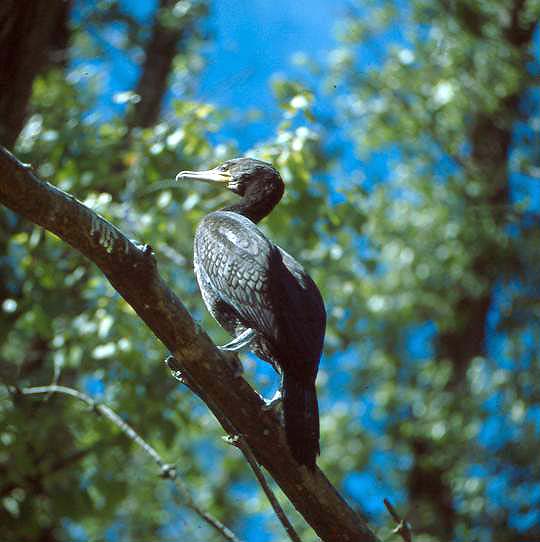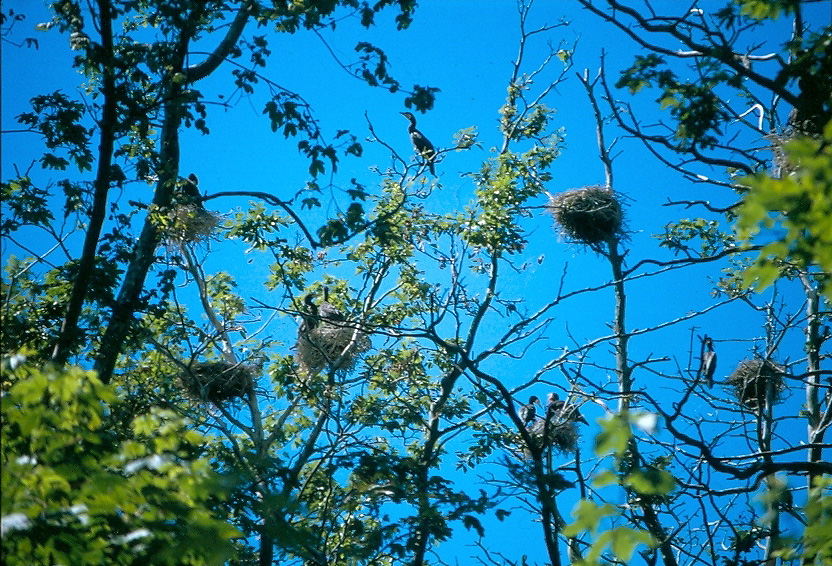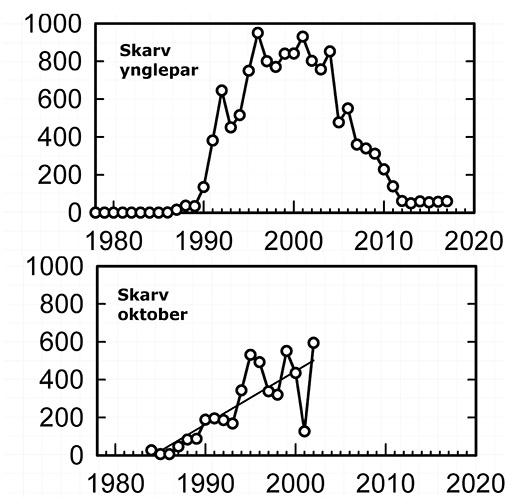Cormorant
(Phalacrocorax carbo).
Young cormorants almost ready to fly.
In the late 1970s a Cormorant was an unusual sight in Roskilde Fjord but in 1986 a pair appeared in the heron colony at Askehoved in Bognæs forest. During the following years the colony tripled in size annually, reaching 650 pairs in 1992. The rapid growth came to an end and the number varied between 700 to 800 pairs until 2007, when their new neighbours, White-tailed Eagles, built a nest. Since then their numbers have fallen sharply. This decline is however balanced by new colonies at Selsø and Aresø, and the odd nest has also been found on the ground on smaller islands. The arrival of Cormorants in the fjord coincided with a decline in the Tern population and, as Cormorants often roost in places where Tern have or had their colonies, this has certainly contributed to that decline.

The Cormorant colony at Bognæs.
Cormorants winter in central Europe and are already here at the end of March but the establishment of the colony takes a very long time and the last young do not leave the colony until August.
They often forage a long way from the colony, in Køge bay and Isefjord as well as in nearby lakes. An analysis of the otoliths from the fish eaten by Cormorants, which are found in their pellets, gives a good picture of the Cormorant´s diet. The Cormorants in Roskilde Fjord are remarkable for their relatively high consumption of eels, but it is surprising that about 10% (by weight) of their food consists of stickle-back. This is in accord with the general principal that the cormorant´s choice of food reflects the food available in the area.
Wherever it appears the Cormorant is a controversial bird because it is in competition with fishermen and because its droppings damage the trees it nests in.
Key to the Distribution Map.
Cormorant - population trends

Cormorant breeding pairs
Cormorant October
